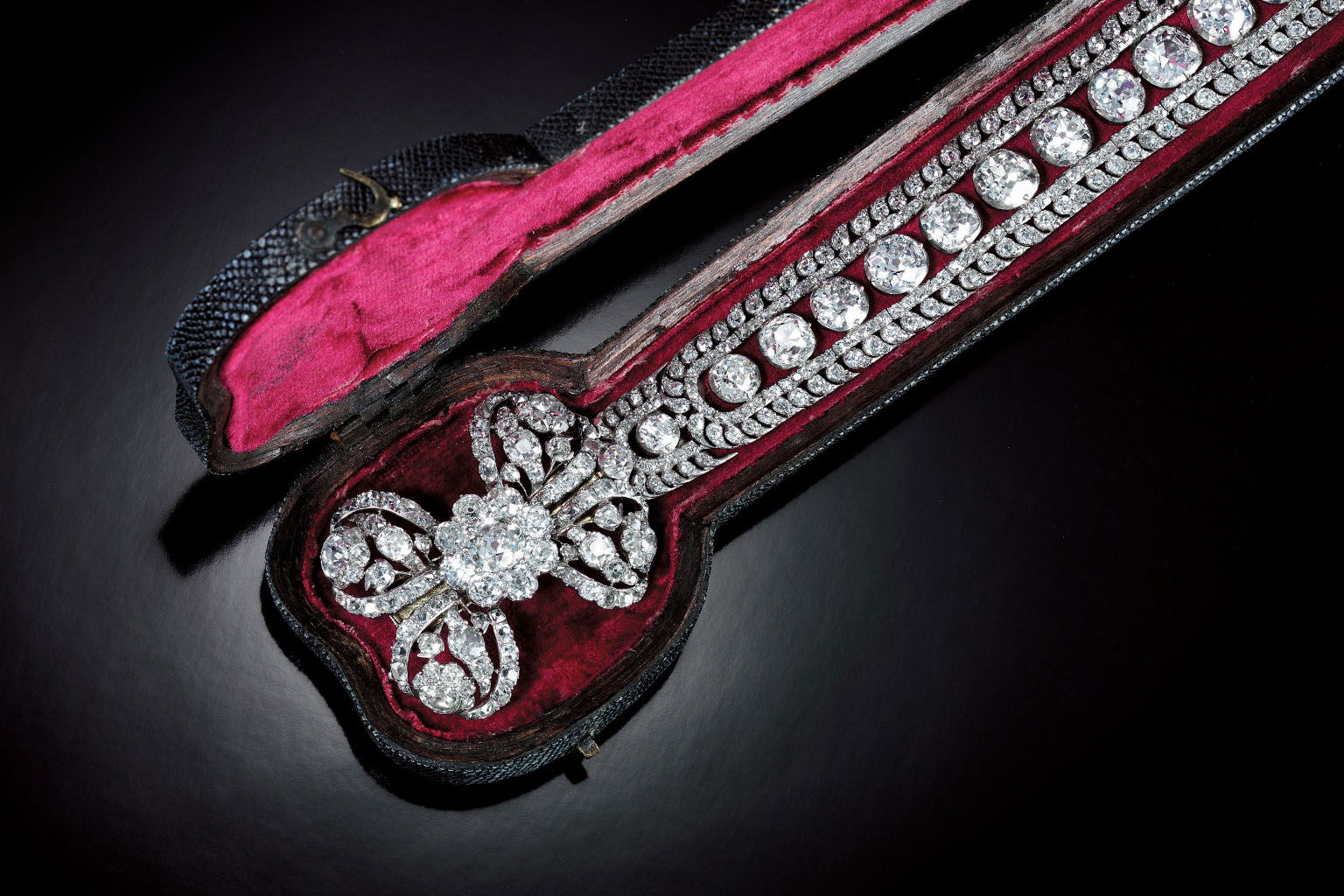The work at Gokhran culminated in the production of an illustrated catalogue: Les Joyaux du Trésor de Russie, or Russia’s Treasure of Diamonds and Precious Stones, published by Fersman, in four volumes, 1925-26 (showing above). Credit was given to the Fabergé jewellers for their assistance in the project and in an article titled The Romanov Heirlooms, Property of the Sovietic Republics, the context and new ownership of the jewels were set out, ‘…it became necessary to rebuild the shattered national economy and gather the People’s assets all over our country. Proeminent amongst these were the Romanov heirlooms: diamonds, precious stones, pearls and gold, Russia’s property since the downfall of the dynasty’. The article continued, ‘Nine huge strong-boxes crammed with gems (and strange to say, without a single inventory to them) were brought to light from the recesses of the Moscow ‘Armoury Hall’ and placed at once in the Safe-Keeping of the People’s Representatives’.







